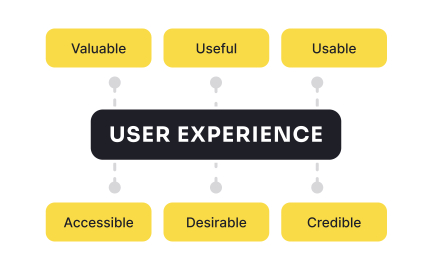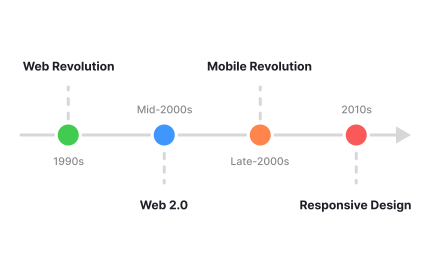UX Evangelism
UX evangelism promotes user-centered thinking across teams by sharing wins, research, and impact to elevate design’s value in the organization.

What is UX Evangelism?
Your organization struggles with user-centered design adoption because UX principles remain confined to design teams rather than being embraced across development, marketing, and business strategy where user experience decisions actually get made daily.
Most UX professionals focus on their own design work without systematically spreading user-centered thinking throughout organizations, missing opportunities to improve user experience through broader organizational alignment and UX awareness.
UX evangelism is the systematic promotion of user experience principles and practices across organizations to build UX awareness, advocate for user needs, and influence decision-making processes that affect user experience quality beyond just design team activities.
Organizations with effective UX evangelism achieve 70% better user experience consistency, 50% faster UX adoption across teams, and significantly higher user satisfaction because user-centered thinking influences all business decisions rather than just design outputs.
Think about how UX leaders at companies like IBM transformed organizational culture to prioritize user needs across product development, or how design advocates influence engineering and business decisions to maintain user focus throughout complex product development processes.
Why UX Evangelism Matters for Organizational UX Maturity
Your user experience efforts have limited impact because UX principles don't influence decisions made by non-design teams who actually control many factors that affect user experience quality and business outcomes.
The cost of lacking UX evangelism compounds through every business decision that could benefit from user-centered perspective. You get organizational choices that inadvertently harm user experience, missed opportunities to align business strategy with user needs, and competitive disadvantage when user experience isn't prioritized systematically.
What effective UX evangelism delivers:
Broader organizational UX awareness because evangelism spreads user-centered thinking beyond design teams to influence decisions across development, marketing, sales, and business strategy that affect user experience.
When UX evangelism succeeds, user needs become considerations in all business decisions rather than just design choices that might be overridden by other organizational priorities.
Better cross-functional collaboration on user experience through shared understanding of UX principles that enables productive coordination between design, engineering, and business teams around user-centered objectives.
Enhanced UX resource allocation and organizational support as UX evangelism builds stakeholder understanding of user experience value that leads to better resource allocation and strategic prioritization.
Improved user experience consistency across all customer touchpoints because UX principles influence marketing, customer service, and business operations rather than just product interfaces.
Stronger competitive positioning through organizational UX maturity that creates sustainable advantages through systematic user experience excellence rather than just good design in isolated products.
Advanced UX Evangelism Strategies
Once you've established basic UX evangelism capabilities, implement sophisticated organizational influence and culture change approaches.
Executive Leadership UX Education: Engage senior leadership in UX education and advocacy that creates top-down support for user-centered organizational transformation.
UX Metrics Integration with Business KPIs: Connect user experience measurement to business performance indicators that demonstrate UX impact on organizational success rather than just design quality.
Cross-Functional UX Training and Skill Development: Provide UX training that enables non-design teams to contribute to user experience improvement rather than just understanding UX importance without practical application.
Organizational UX Maturity Assessment and Improvement: Use systematic approaches to evaluate and improve organizational UX maturity through strategic evangelism and culture change initiatives.
UX evangelism is the practice of advocating for the importance of user experience design and its impact on the success of digital products or services. A UX evangelist is a professional who passionately promotes the value of user-centered design and user experience within an organization or industry. They work to raise awareness about the benefits of investing in UX design, educate stakeholders about UX principles, and influence decision-makers to prioritize user needs in product development.
A UX evangelist plays a vital role in the organization's success by fostering a culture of user-centricity and empathy. Some ways they contribute include:
- Educating teams: By sharing knowledge and insights about user research, design methodologies, and best practices, UX evangelists help teams make informed decisions that align with user needs and business goals.
- Advocating for users: They serve as the voice of users, advocating for their needs, preferences, and pain points during product development discussions and decision-making processes.
- Improving user satisfaction: Through their efforts, UX evangelists enhance the overall user experience, leading to higher customer satisfaction, increased loyalty, and improved brand reputation.
- Driving innovation: By emphasizing the importance of understanding users and their behaviors, UX evangelists inspire teams to think creatively and innovate with user needs at the core of new product ideas.
A UX evangelist builds support for UX initiatives by using various strategies, such as:
- Presenting compelling evidence: They use data from user research, usability testing, and user feedback to demonstrate the impact of user-centered design on product success and the organization's bottom line.
- Establishing success stories: Sharing case studies or success stories from previous UX projects can showcase the tangible benefits of incorporating UX design practices.
- Collaborating with stakeholders: By collaborating with key stakeholders and involving them in the UX process, the UX evangelist gains buy-in and fosters a sense of ownership and shared responsibility for user experience improvements.
- Providing training and workshops: Conducting training sessions and workshops on UX design principles and methodologies can help educate teams and empower them to apply UX techniques in their work.
Recommended resources
Courses

Mentorship Mastery

Product Analytics

UX Research
Lessons

What is UX Design?

Common Designer Roles








